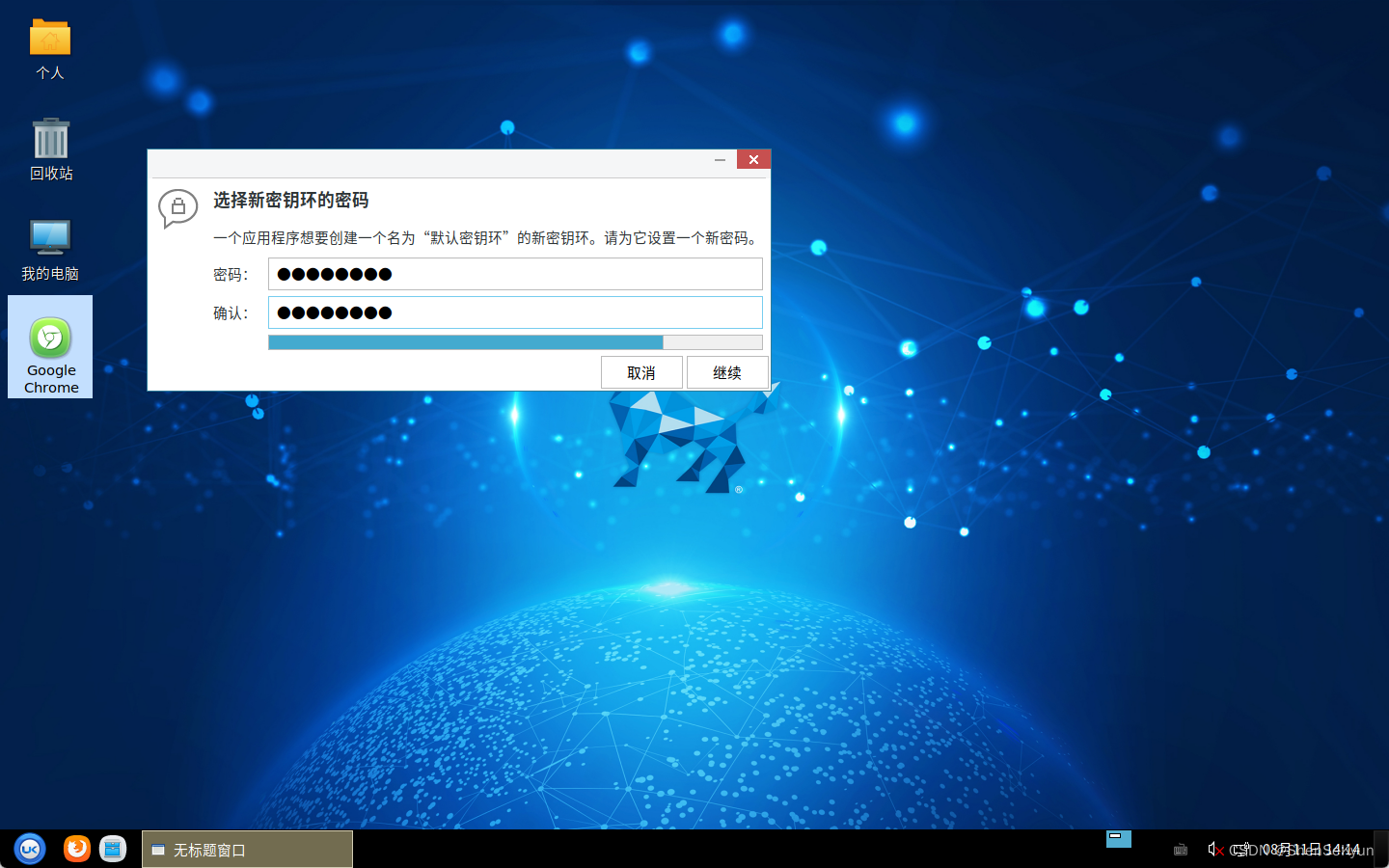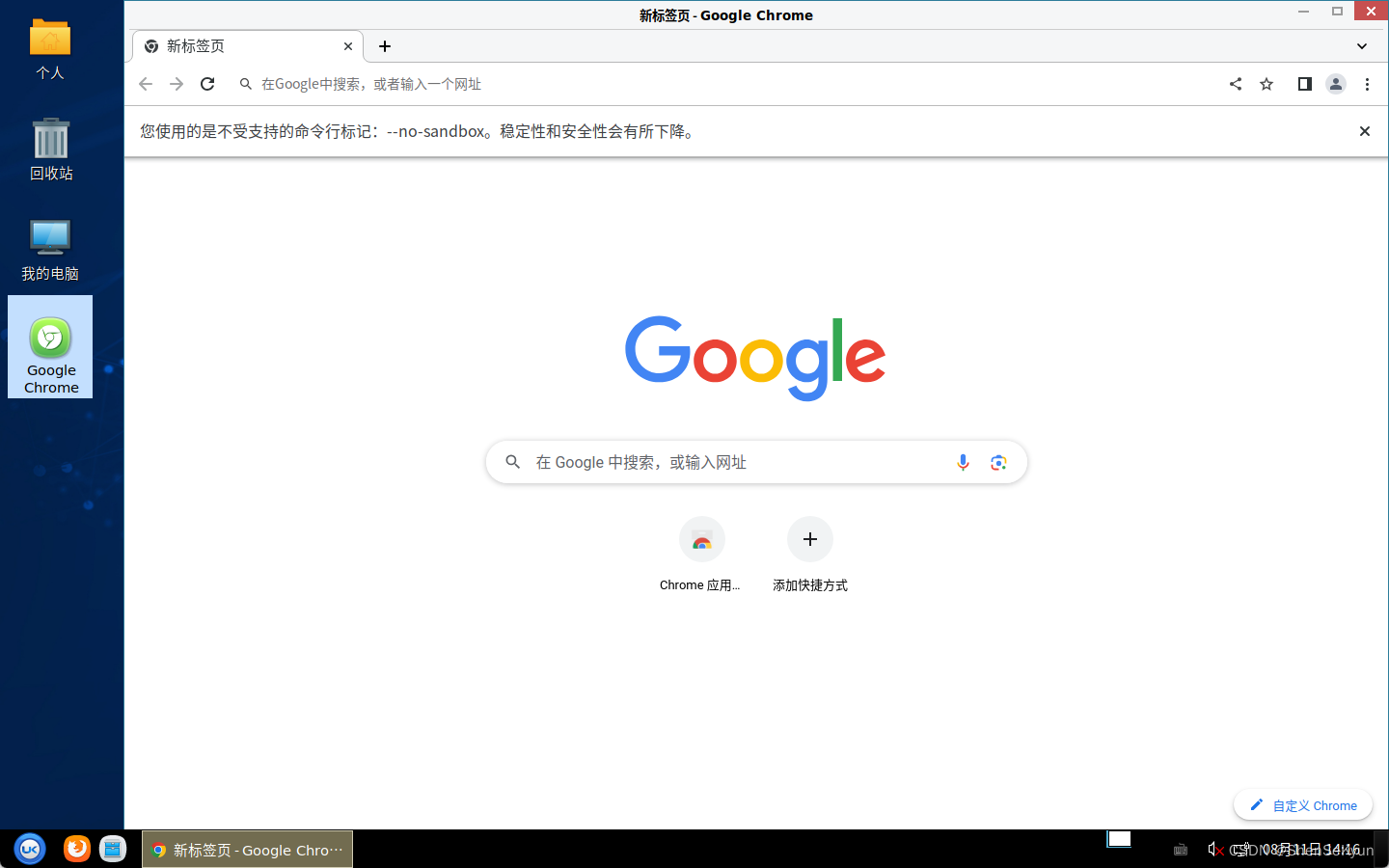Article directory
System environment
OS version: Galaxy Kirin Server Operating System V10SP2 (x86_64)
Chrome browser version: 115.0.5790.170 (Linux version 64bit)
installation steps
Download the Google Chrome browser installation package;
1. Visit the Google Chrome official website , scroll to the bottom, and click "Other Platforms";

2. Select in the pop-up "Get Chrome" dialog box Linux, then continue to select in the "Get Chrome (Linux version)" dialog box 64位 .rpm(适用于Fedora/openSUSE), and finally Click "Accept and Install" to start the download.
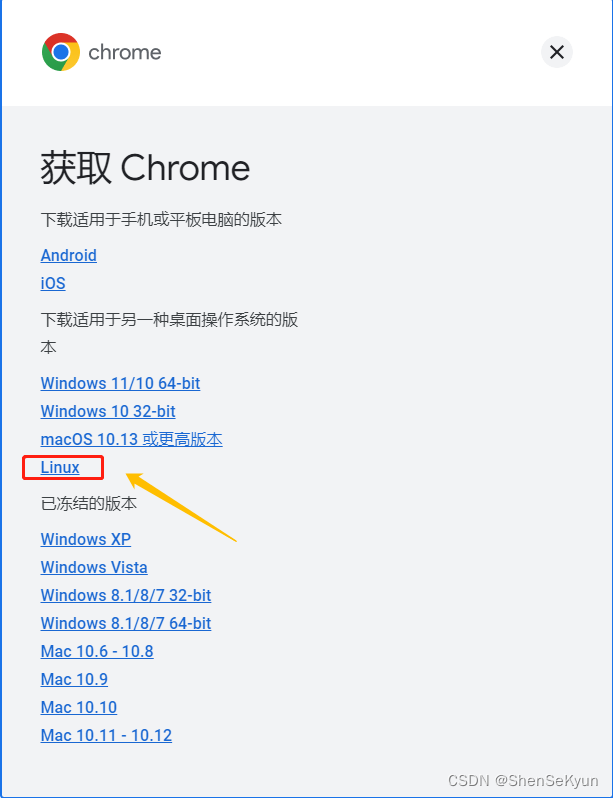
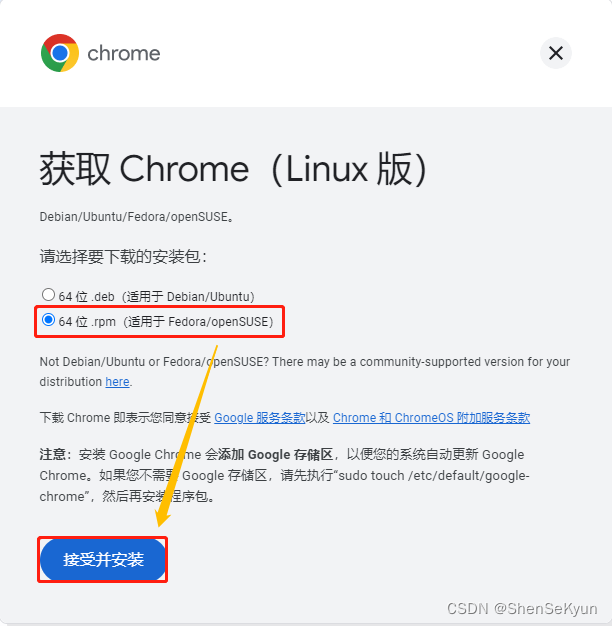
3. Upload the downloaded Chrome browser installation package to the server system.
start installation
- Install the Google Chrome offline package directly;
[root@localhost ~]# rpm -ivh google-chrome-stable_current_x86_64.rpm

2. It prompts that the "libvulkan.so.1()(64bit)" dependent library is missing. We can find a networked virtual server environment or use the system installation image ISO file to build a local yum source, and then use the following command to locate the dependent library The component package name to which it belongs;
[root@localhost ~]# yum provides "libvulkan.so.1()(64bit)"

3. We can download the dependent offline package and upload it to the server system for installation;
[root@localhost ~]# rpm -ivh vulkan-loader-1.1.92.0-2.ky10.x86_64.rpm

4. It prompts again that there are missing dependencies. This time, directly download and upload the missing dependency package name to the server system for installation;
[root@localhost ~]# rpm -ivh mesa-vulkan-drivers-20.1.4-1.p01.ky10.x86_64.rpm

5. Check the component package to which "vulkan(x86-64)" belongs;
[root@localhost ~]# yum provides "vulkan(x86-64)"

6. It turns out that the vulkan-loader and mesa-vulkan-drivers components depend on each other, so we need to install these two component packages at the same time;
[root@localhost ~]# rpm -ivh vulkan-loader-1.1.92.0-2.ky10.x86_64.rpm mesa-vulkan-drivers-20.1.4-1.p01.ky10.x86_64.rpm

7. Install the Chrome installation package again.
[root@localhost ~]# rpm -ivh google-chrome-stable_current_x86_64.rpm

Use Chrome browser
- Find "Google Chrome" in the system's "Start" menu - "All Programs" and open it, and find that the browser is not responding;
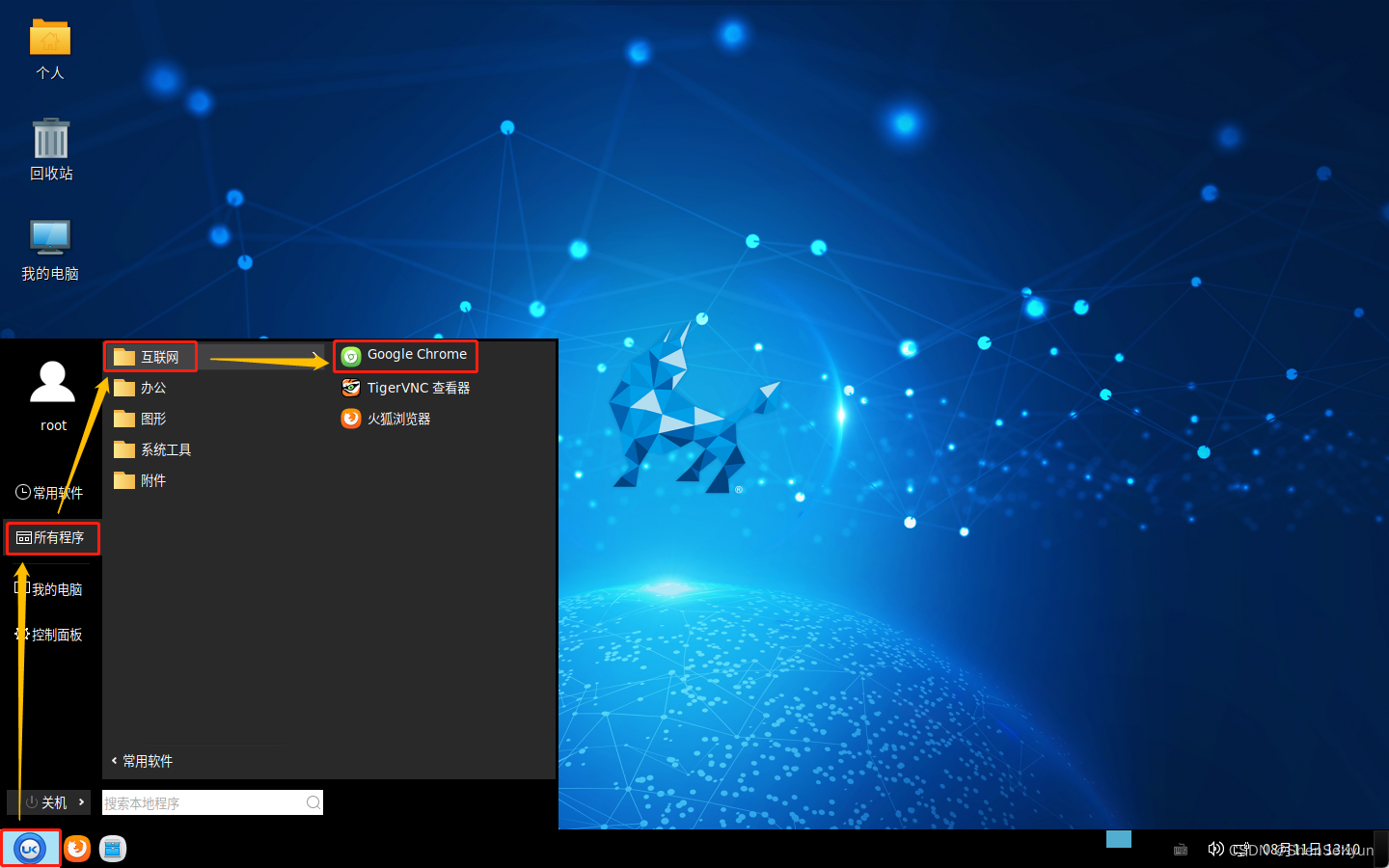
- Use the command line on the terminal to open the Chrome browser and try it;
[root@localhost ~]# /usr/bin/google-chrome-stable --incognito

3. Since the test environment uses the root account, the root account needs to add the –no-sandbox parameter to start the Chrome browser. So we modify the Chrome browser’s Desktop file as follows, then save and exit;
[root@localhost ~]# vim /usr/share/applications/google-chrome.desktop

4. Re-open the Chrome browser, and the created 密钥环dialog box will be prompted. After setting the key ring password, click "Continue" to start the Chrome browser normally.
